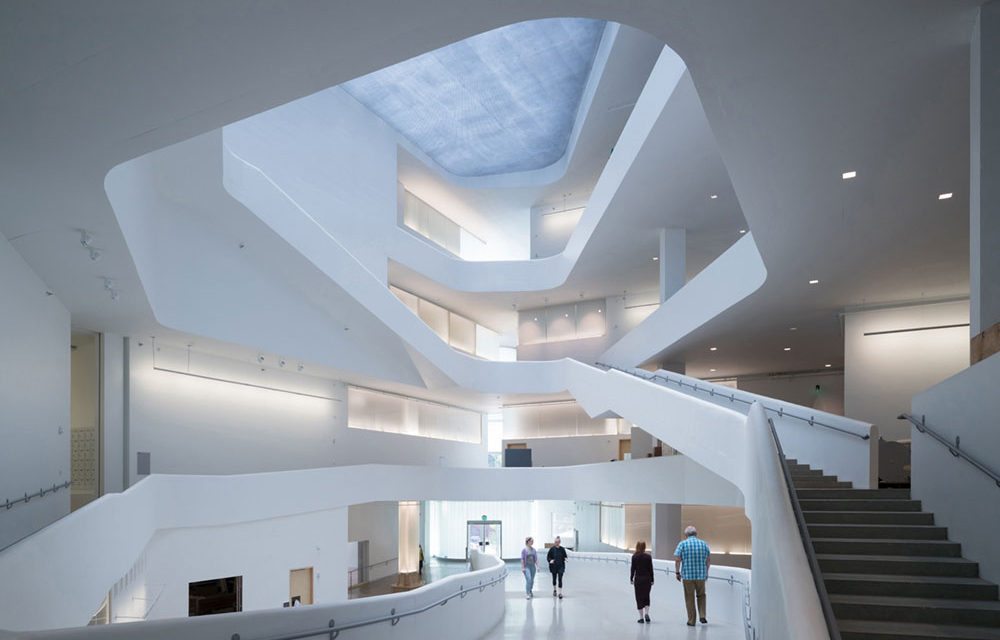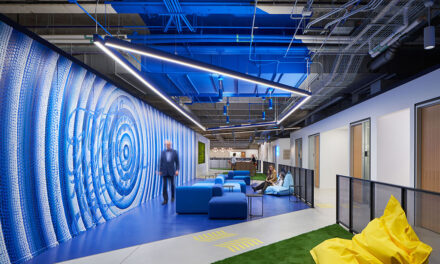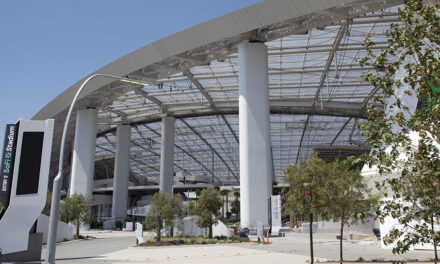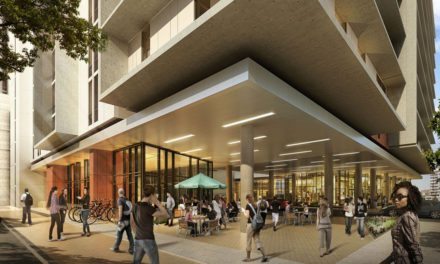The University of Iowa Visual Arts Building opened October 7; a signature facility for the campus and a collaboration of Steven Holl Architects (Architect) and BNIM Architects (Associate Architect / Architect of Record) http://www.bnim.com/project/visual-arts-building. The 126,000 square-foot facility is the new home for the School of Art & Art History functions that were previously housed in the 1936 Art Building. The facility will provide studio space for ceramics, sculpture, metals, photography, printmaking, 3D design, intermedia, animation and graphic design, as well as graduate student studios, faculty and staff studios and offices, and gallery space.
The new building is directly adjacent to and northwest of Art Building West, the only place in the country where two Steven Holl Architects’ buildings of different vintages are side by side. BNIM worked together with the users during the design process to coordinate the physical layout and technical aspects of the making of art, directed communications with the University Design and Construction Department, oversaw the technical resolution and execution of the design concept, and worked closely with the contractors during the construction of the facility.
“This project has been an exemplar of collaboration in realizing a functional and exhilarating facility for the School of Art & Art History,” Rod Kruse, BNIM Principal-in-charge said. “This new facility is intended to lift the School to new levels of enrollment and success and will be a destination for students and professionals of art and architecture.”
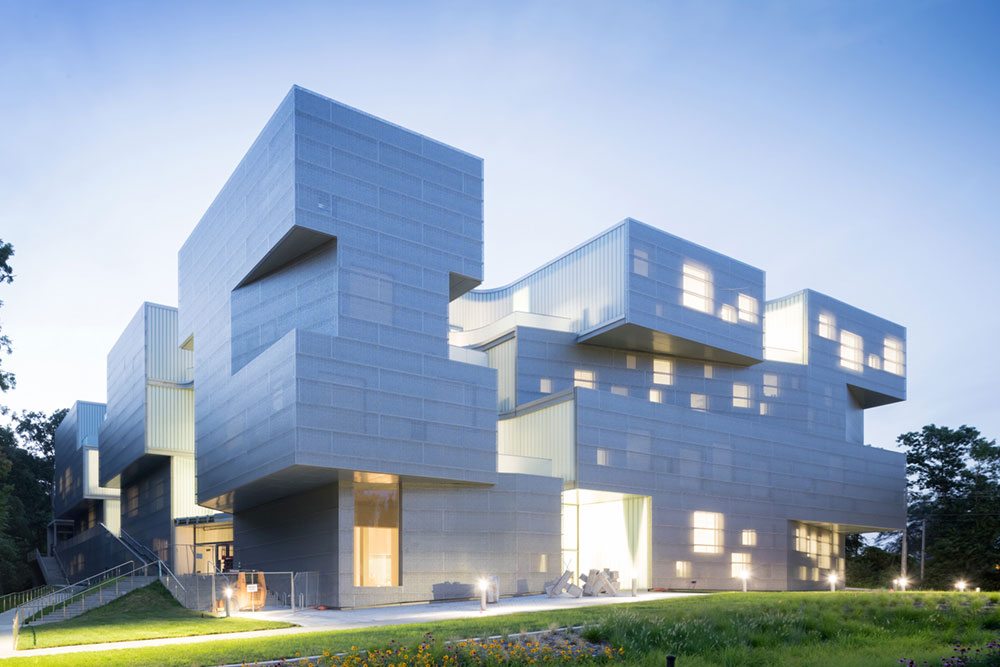
University of Iowa New Visual Arts Building. Photo credit: © Iwan Baan. Courtesy of Steven Holl Architects
A punched concrete frame structure composed of cast-in-place concrete provides thermal mass at the exterior while “bubble” slabs incorporating the Cobiax bubble deck system provide radiant cooling and heating. Computer modeling software was utilized to design the irregular shape of the structure and to coordinate the installation of the complex exposed mechanical pipes and ductwork. Key design features include significant daylighting, natural ventilation at the atrium skylight, a Rheinzink skin in weathering blue-green with a perforated stainless steel scrim for sun shade covers at the southwest and southeast building facades, thermal mass storage, an innovative thermal active slab heating and cooling system, and highly efficient HVAC systems utilizing energy recovery wheels to recapture potentially lost thermal energy through the extensive exhaust system.
Connection and communication between the departments is facilitated in the vertical carving out of large open floor plates. Natural light and natural ventilation are inserted into the deep floor plates by the inclusion of what the design team calls “multiple centers of light.” Several vertical cutouts are designed to foster interaction between the facility’s four levels. The atrium provides a central skylight and circulation space that results in a powerful core of the building.
Sculptural open stairs are shaped to encourage meeting, interaction and discussion. Some stairs stop at generous landings with tables and chairs, others open onto lounge spaces with built in seating.
BNIM and Steven Holl Architects have collaborated for more than 15 years on six facilities, and their seamless working relationship results in elegant, distinctive, and technically superior facilities, acknowledged BNIM’s Jon Sloan.
“This was a true partnership between architecture firms with a strong, trusting relationship that has been built over many years,” Sloan said. “Throughout the project, we felt like and operated as one office. That depth of collaboration extended from the two architecture firms to the owner, the contractor, and the engineering consultants.”
ABOUT BNIM
BNIM is one of the most important design firms working to redefine practice and building performance in architecture today. As early pioneers of sustainability in the building industry, BNIM continues to shape the national and global design conversation on design excellence and delivering transformational results for clients. The firm received the 2011 AIA National Architecture Firm Award for their work. Established in 1970, the firm has emerged as a leading resource for out-of-the-box methodologies, innovative technologies and cutting-edge research in the fields of architecture, planning, landscape, education and workplace design. The firm has offices in Kansas City, Mo.; Los Angeles, Calif; San Diego, Calif.; and Des Moines, Iowa. Visit www.bnim.com.

